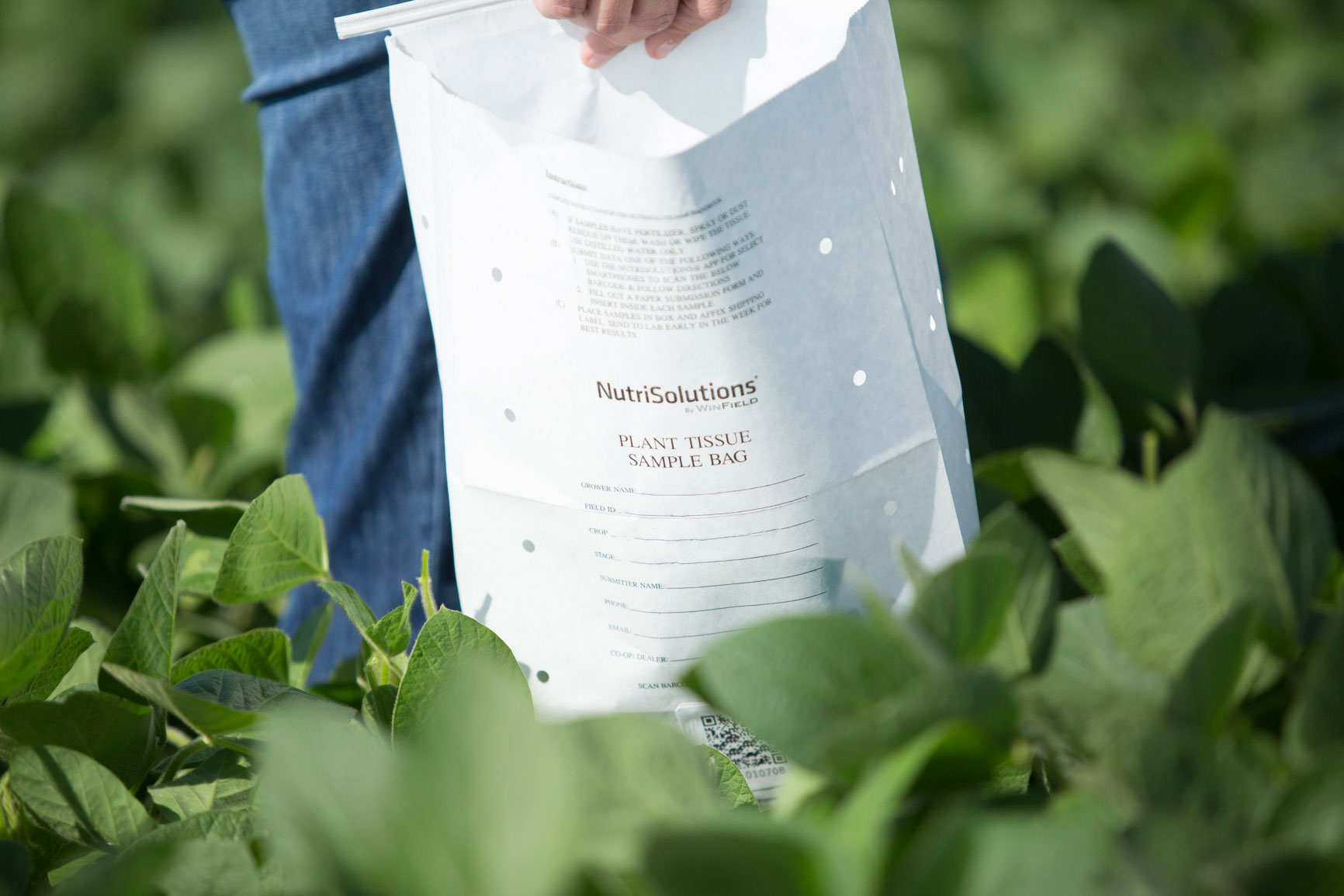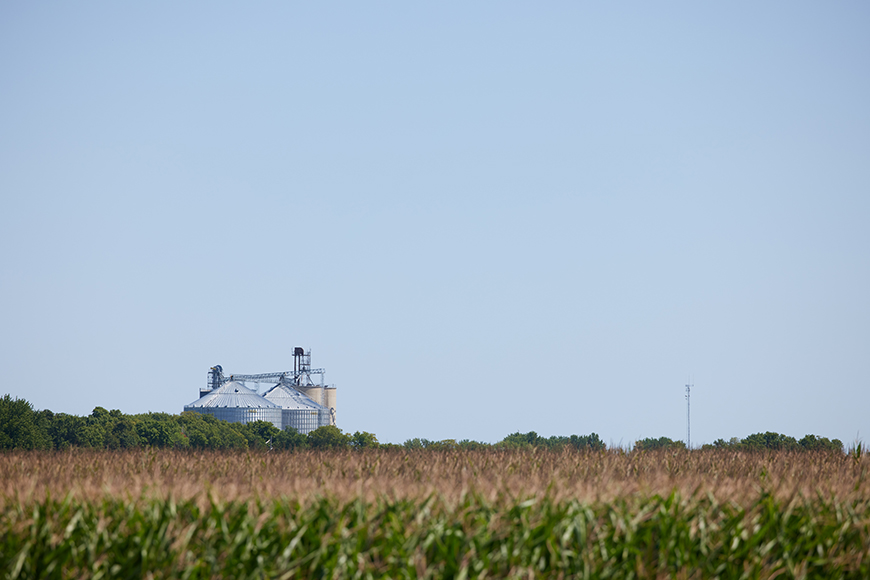2021 Nutrient Trends to Pay Attention To

Tissue tests provide a data-based way to identify specific nutrients needed in your fields. When compiled with data from other tissue tests around your state, they can also provide insight into higher level trends. Monitoring these trends regularly can help inform nutrient strategies and alert you when deficiencies are being reported in your area.
On a semi-weekly basis throughout the growing season, we release proprietary Nutrient Trend Reports from our expansive database of over 600,000 tissue sample data points across 21 states. These exclusive tissue testing insights are made possible through strong partnerships with our local WinField® United retailer network and NutriSolutions® tissue sampling program.
After several weeks of testing so far this season, some interesting patterns have already emerged that could impact your fields.
In corn development, zinc is important for conversion of starch to sugar. It is also used in cell elongation and division. We’ve noticed zinc trending deficient specifically in Ohio, Minnesota, Nebraska, South Dakota and Wisconsin corn.
The benefit of tissue tests is that it also indicates your field’s nitrogen to potassium ratio. Soil tests may show good potassium fertility or great nitrogen management, but the ratio indicates what the plant is actually taking up. A tissue test report will specify the ratio of your field and provide a recommendation on how you can improve it. Typically, if the ratio is above 1.4-1.6, more potassium is needed. If it’s below 1.4, more nitrogen should be applied.
Right now, we’re noticing nitrogen deficiency trends in Illinois soybeans, Wisconsin corn, Wisconsin soybeans, South Dakota corn, Ohio corn and Minnesota corn.
Notable manganese deficiency trends have appeared in Minnesota corn, Ohio corn, Wisconsin soybeans, Wisconsin corn and Illinois corn so far. Since soybeans are ranging from R2-R4 right now, it’s an ideal time to make a manganese application so I would suggest tissue sampling your soybeans to see if they’re in need.
Significant boron deficiency trends have already been noted in Ohio, Minnesota, Nebraska and Wisconsin corn.
Want to stay up to date on trends in your area? Check back on our Nutrient Trend Reports page regularly. New reports are posted nearly every week throughout the growing season. To get familiar with the specific needs of your fields, be sure to take tissue samples three to five days before you plan to apply product. Your locally owned and operated WinField United retailer can help coordinate tissue testing and assist in creating a nutrient application plan.
All photos are either the property of WinField United or used with permission.
© 2021 WinField United. Important: Before use always read and follow label instructions. Crop performance is dependent on several factors many of which are beyond the control of WinField United, including without limitation, soil type, pest pressures, agronomic practices and weather conditions. Growers are encouraged to consider data from multiple locations, over multiple years and to be mindful of how such agronomic conditions could impact results. NutriSolutions, MAX-IN, CornSorb and WinField are trademarks of WinField United All other trademarks are the property of their respective owners.
On a semi-weekly basis throughout the growing season, we release proprietary Nutrient Trend Reports from our expansive database of over 600,000 tissue sample data points across 21 states. These exclusive tissue testing insights are made possible through strong partnerships with our local WinField® United retailer network and NutriSolutions® tissue sampling program.
After several weeks of testing so far this season, some interesting patterns have already emerged that could impact your fields.
Zinc
Typically, at this point in the growing season, zinc isn’t a major concern. However, based on tissue test data, we’ve noticed more deficiencies than usual. This is likely due to the season’s dry conditions since the plant uses zinc to bring other nutrients into the plant.In corn development, zinc is important for conversion of starch to sugar. It is also used in cell elongation and division. We’ve noticed zinc trending deficient specifically in Ohio, Minnesota, Nebraska, South Dakota and Wisconsin corn.
Potassium
The dry conditions are also causing more potassium deficiencies than normal. This is likely because the plant is mobilizing potassium down to the roots to help access as much nitrogen as it can. Since both the roots of a corn plant and the nitrogen in the soil are negatively charged, they repel each other. However, potassium is positively charged, so the corn plant moves potassium down to the roots to make the roots neutral. Then, nitrogen can move closer to the roots and eventually come into the plant.The benefit of tissue tests is that it also indicates your field’s nitrogen to potassium ratio. Soil tests may show good potassium fertility or great nitrogen management, but the ratio indicates what the plant is actually taking up. A tissue test report will specify the ratio of your field and provide a recommendation on how you can improve it. Typically, if the ratio is above 1.4-1.6, more potassium is needed. If it’s below 1.4, more nitrogen should be applied.
Nitrogen
Speaking of nitrogen, this is an important point in the season to ensure your fields have plenty of it. Nitrogen is required for protein synthesis, making it key for optimizing plant growth and yield.Right now, we’re noticing nitrogen deficiency trends in Illinois soybeans, Wisconsin corn, Wisconsin soybeans, South Dakota corn, Ohio corn and Minnesota corn.
Manganese
Manganese deficiencies are currently showing up in both corn and soybeans. Manganese is an important micronutrient that’s required for photosynthesis, carbohydrate production and nitrogen utilization.Notable manganese deficiency trends have appeared in Minnesota corn, Ohio corn, Wisconsin soybeans, Wisconsin corn and Illinois corn so far. Since soybeans are ranging from R2-R4 right now, it’s an ideal time to make a manganese application so I would suggest tissue sampling your soybeans to see if they’re in need.
Boron
If you haven’t applied your fungicide yet, tissue test your fields or check the nutrient trends in your area to see if there is evidence of boron deficiency. If so, this is a very important micronutrient to get on the crop at that time. The corn plant moves boron to its reproductive parts during its transition from vegetative growth to reproductive growth, which causes the plant leaves to become deficient in boron. By using a foliar application, you can put the boron back to the leaves where it previously moved it from.Significant boron deficiency trends have already been noted in Ohio, Minnesota, Nebraska and Wisconsin corn.
MAX-IN Micronutrients
If your tissue tests reveal a need for an application, turn to MAX-IN® micronutrients. The portfolio of foliar-applied liquid micronutrients is formulated with best-in-class ingredients to help optimize nutrient uptake and promote healthy plant development. MAX-IN micronutrients also contain CornSorb® technology to help the product stick to the target area and permeate into the leaf surface.Want to stay up to date on trends in your area? Check back on our Nutrient Trend Reports page regularly. New reports are posted nearly every week throughout the growing season. To get familiar with the specific needs of your fields, be sure to take tissue samples three to five days before you plan to apply product. Your locally owned and operated WinField United retailer can help coordinate tissue testing and assist in creating a nutrient application plan.
All photos are either the property of WinField United or used with permission.
© 2021 WinField United. Important: Before use always read and follow label instructions. Crop performance is dependent on several factors many of which are beyond the control of WinField United, including without limitation, soil type, pest pressures, agronomic practices and weather conditions. Growers are encouraged to consider data from multiple locations, over multiple years and to be mindful of how such agronomic conditions could impact results. NutriSolutions, MAX-IN, CornSorb and WinField are trademarks of WinField United All other trademarks are the property of their respective owners.





